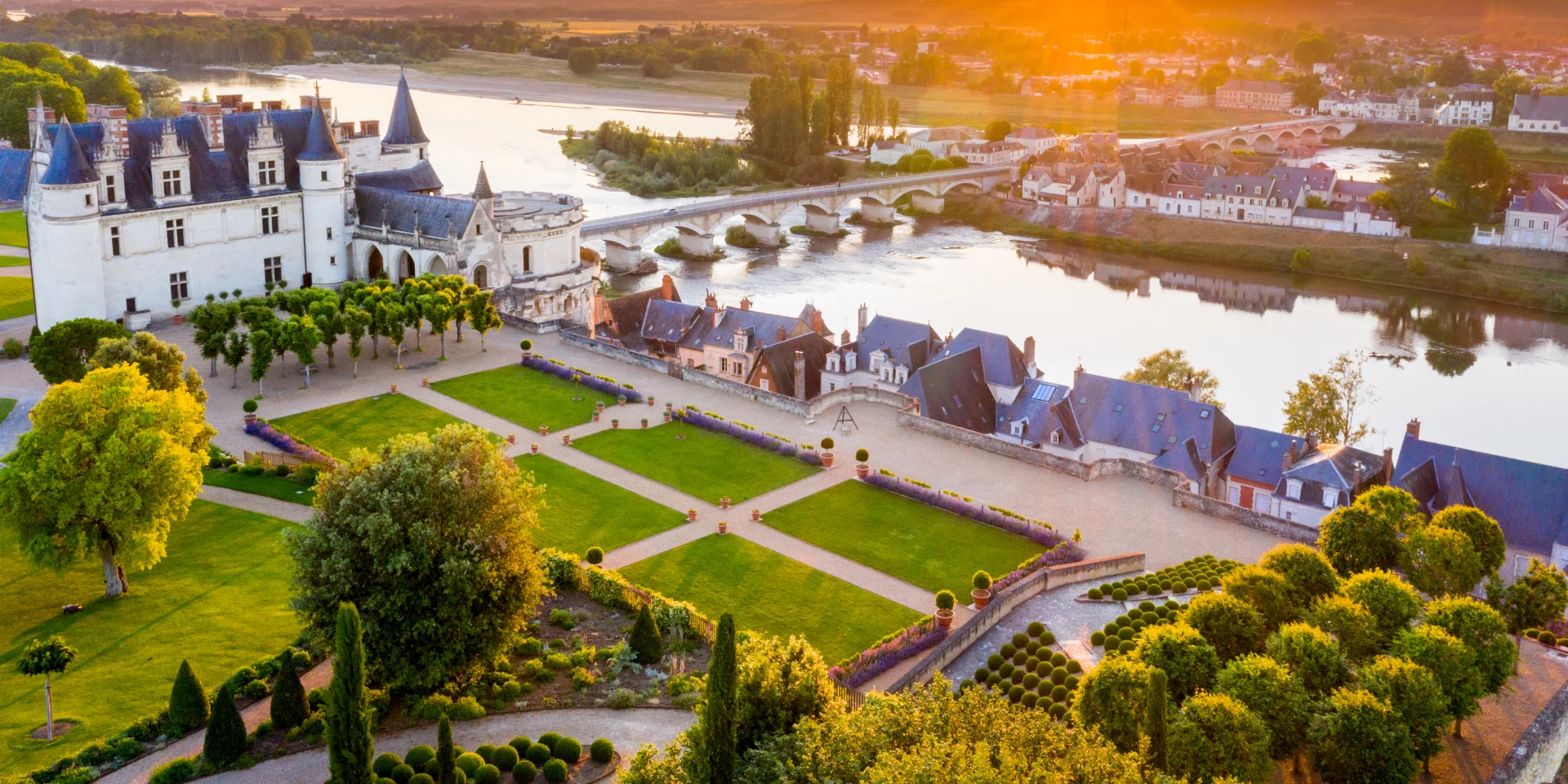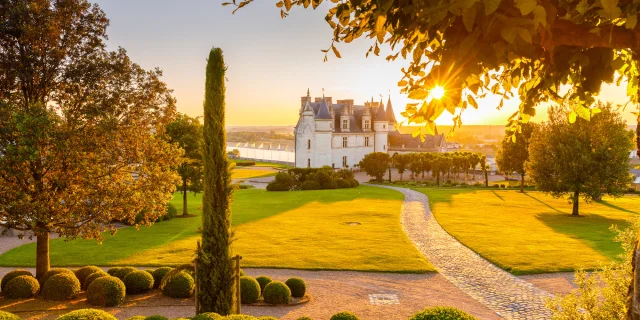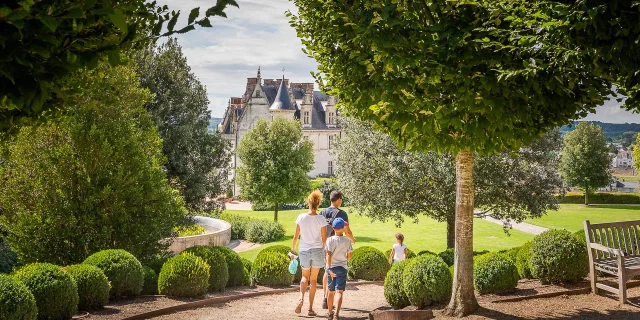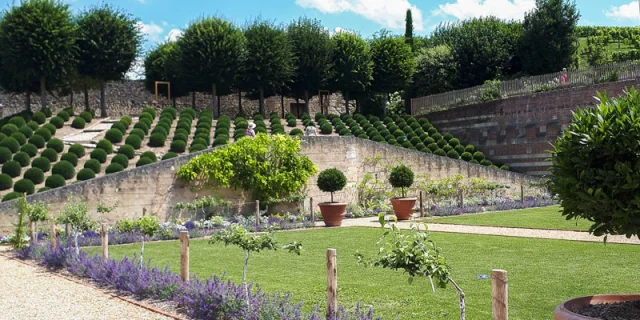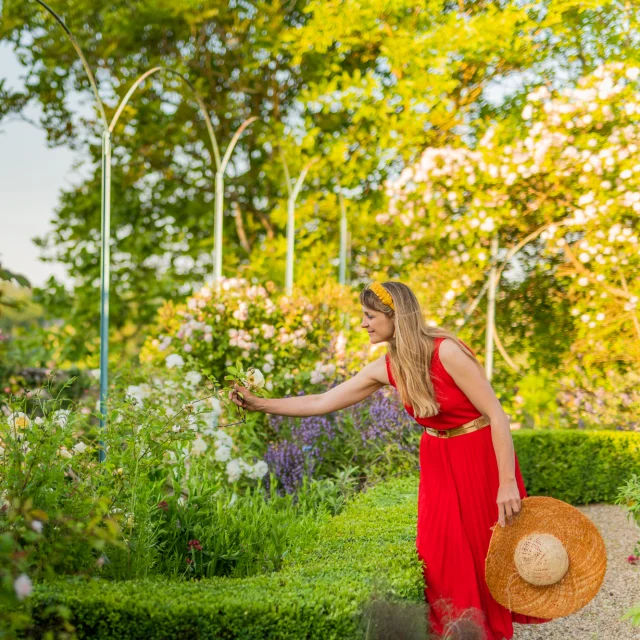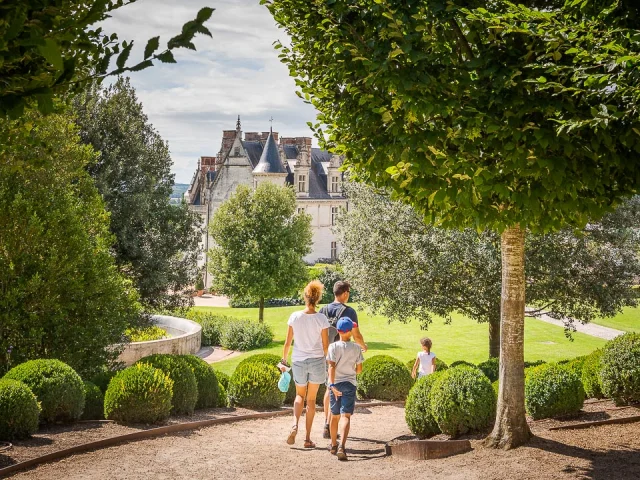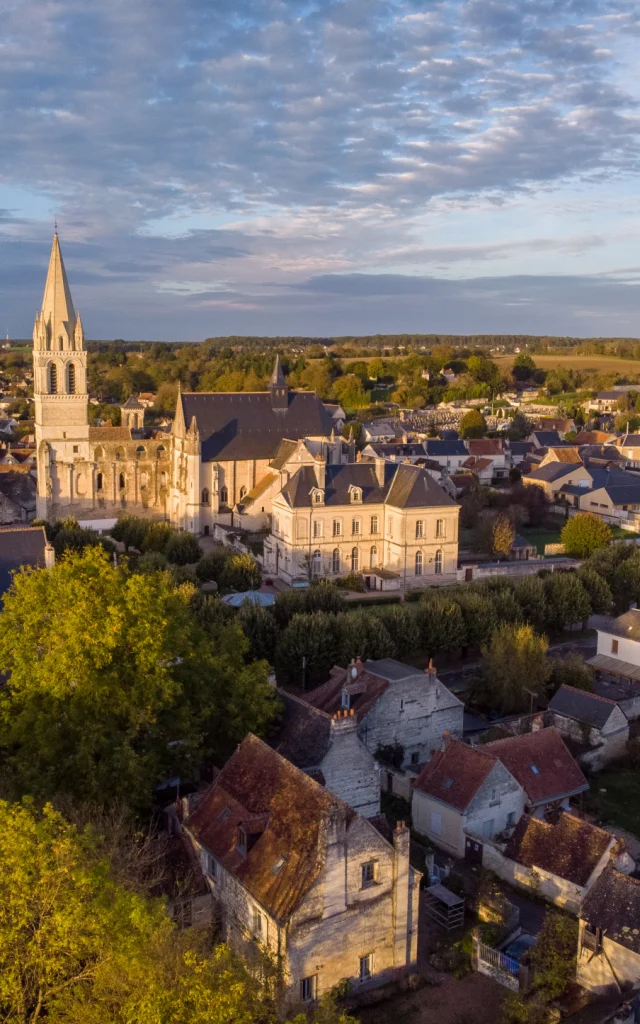The royal history of the gardens of Amboise
Charles VIII, fascinated by the wonders discovered during his campaign in Naples, brought back Dom Pacello da Mercogliano in 1496. The Neapolitan gardener then created on the terrace of Naples the first Italian-style garden in the kingdom of France. A landscape revolution. Francis I continued this metamorphosis, adding geometric parterres and Mediterranean species.
The centuries have passed, shaping these royal gardens. In 2017, a major restoration brought the original 15th-century designs back to life. The pruned boxwoods and aromatic plants now tell the story of this extraordinary botanical adventure that marked the advent of the French Renaissance.
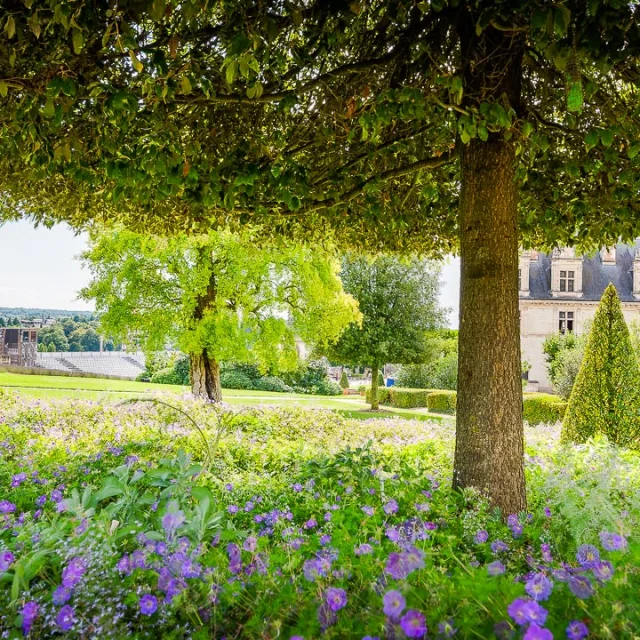 Chateau Royal Amboise Credit Adt Touraine Jc Coutand 2028 2
Chateau Royal Amboise Credit Adt Touraine Jc Coutand 2028 2